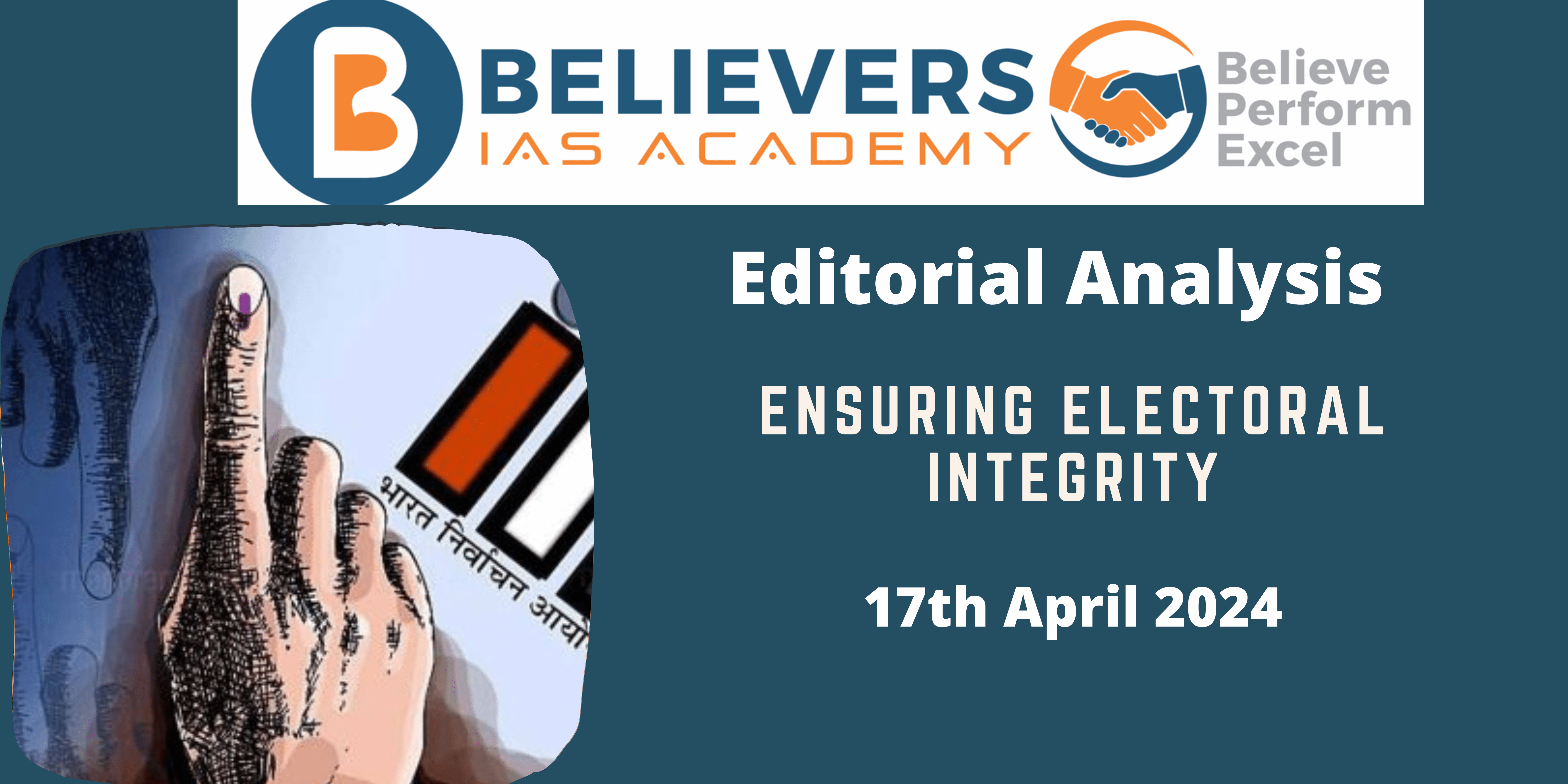Ensuring Electoral Integrity
Context:
The recent decision by the Supreme Court to entertain petitions advocating for 100% cross-verification of Voter Verifiable Paper Audit Trail (VVPAT) slips with Electronic Voting Machines (EVMs) has reignited debates surrounding electoral integrity in India.
Relevance:
GS – 02 (Government Policies & Interventions)
Facts for Prelims:
- Voter Verifiable Paper Audit Trail (VVPAT): It is a separate system connected to the EVM that enables voters to confirm that their votes are recorded accurately. It was first implemented during the bye-election of the Noksen Assembly Constituency in Nagaland in 2013. It was deployed in all constituencies, during the 2019 Lok Sabha elections.
Dimensions of the Article:
- What is an Electronic Voting Machine (EVM)
- Key features of EVM
- Benefits of EVM
- What is the issue?
- Concerns
- Suggested Measures
What is an Electronic Voting Machine (EVM)?
- An EVM is a device used to electronically record votes.
- Since 1998, the Election Commission has been using EVMs more and more instead of ballot boxes.
- In 2003, all state elections and by-elections started using EVMs. Then, in 2004, the Commission decided to use only EVMs for Lok Sabha elections.
Key features of EVM:
- An EVM used by ECI can record up to 2,000 votes.
- They don’t need electricity. They run on a regular battery made by Bharat Electronics Limited or Electronics Corporation of India Limited.
- The microchip in EVMs is a one-time programmable chip, so it can’t be read or changed.
- Also, EVMs work on their own and don’t use any operating system.
Benefits of EVM:
- EVMs make voting more accurate, reducing mistakes and arguments over votes.
- They make voting faster and more organized because they don’t need manual counting.
- EVMs help keep the voting process clear and reliable. Features like VVPAT let voters check if their votes are recorded correctly.
- EVMs save money by not needing lots of paper, printing, or storing millions of ballots for each election.
What is the issue?
- The evolution of India’s voting process from traditional paper ballots to the introduction of EVMs marks a significant milestone in electoral modernization.
- Recent petitions highlight persistent doubts and challenges surrounding the accuracy and transparency of electronic voting systems.
- While EVMs have streamlined the voting process and minimized electoral malpractices, questions regarding their susceptibility to hacking and the adequacy of existing verification procedures persist.
Concerns:
- The absence of 100% cross-verification of VVPAT slips raises concerns regarding the accuracy and reliability of election results.
- Critics argue that the current sample-based verification process may fail to detect defective EVMs or instances of tampering, thereby undermining the credibility of electoral outcomes.
- Moreover, allegations of EVM manipulation and hacking, although refuted by the Election Commission of India (ECI), continue to cast a shadow of doubt over the integrity of India’s electoral process.
Suggested Measures:
- Scientific Sampling Methodology: The current practice of sample-based verification should be replaced with a scientifically determined sampling methodology. Dividing each state into large regions and conducting comprehensive cross-verification within these regions can ensure statistically significant scrutiny of EVM counts against VVPAT slips. In case of discrepancies, full counting of VVPAT slips for the concerned region should be mandated to uphold electoral integrity.
- Introduction of Totaliser Machines: To safeguard voter privacy and prevent booth-wise profiling, the introduction of totaliser machines can aggregate votes from multiple EVMs before revealing candidate-wise counts. This measure would not only protect voter anonymity but also mitigate the risk of intimidation and coercion at the booth level.
- Transparent Consultation Process: The government should engage in transparent and inclusive consultations with stakeholders, including political parties, civil society organizations, and electoral experts, to solicit feedback on electoral reforms. Open dialogue and deliberation can help identify concerns and develop effective solutions to enhance the integrity of India’s electoral process.




